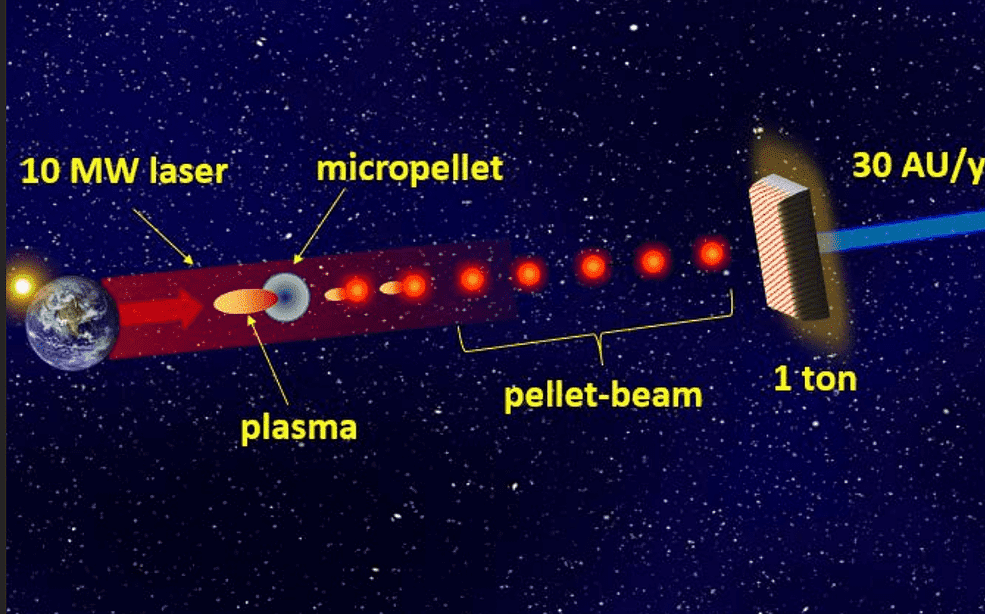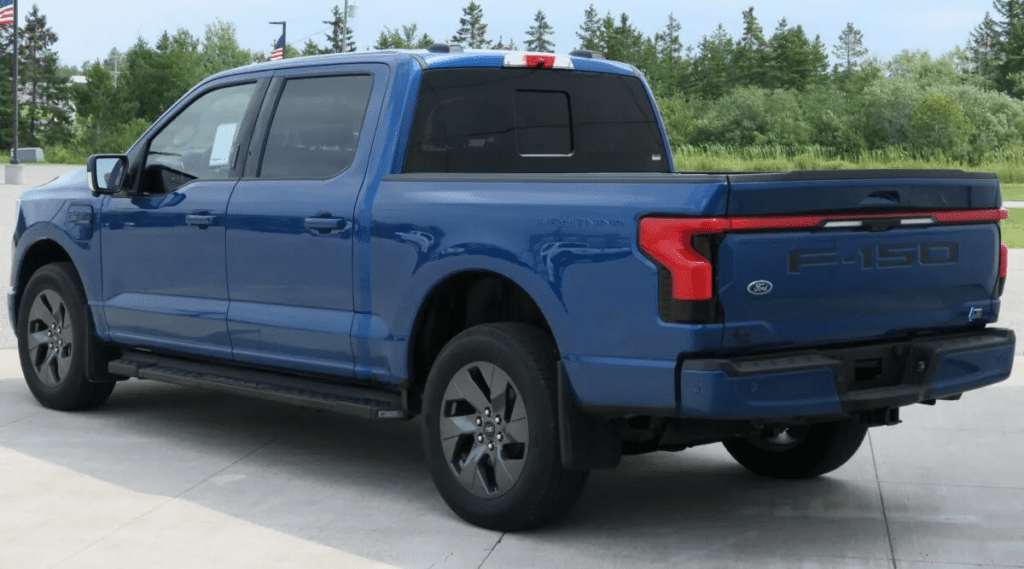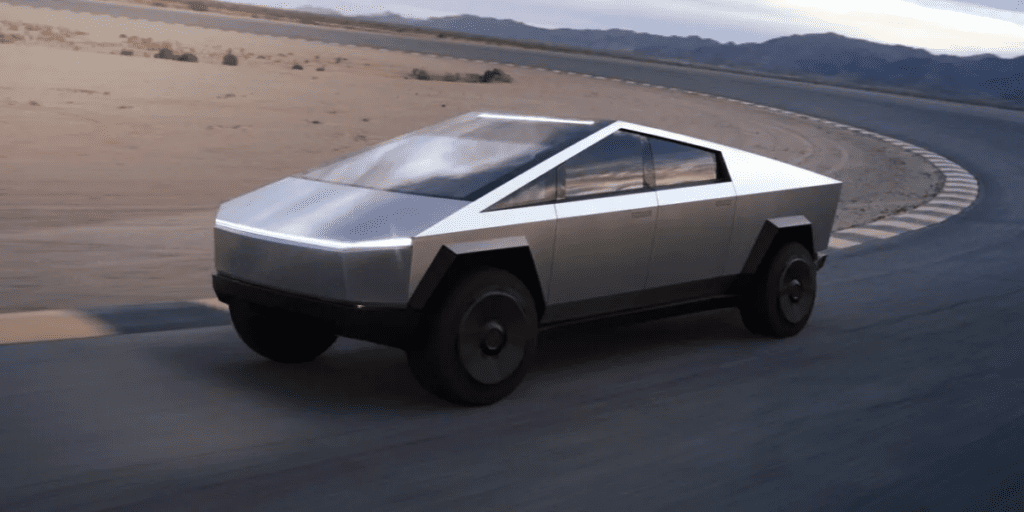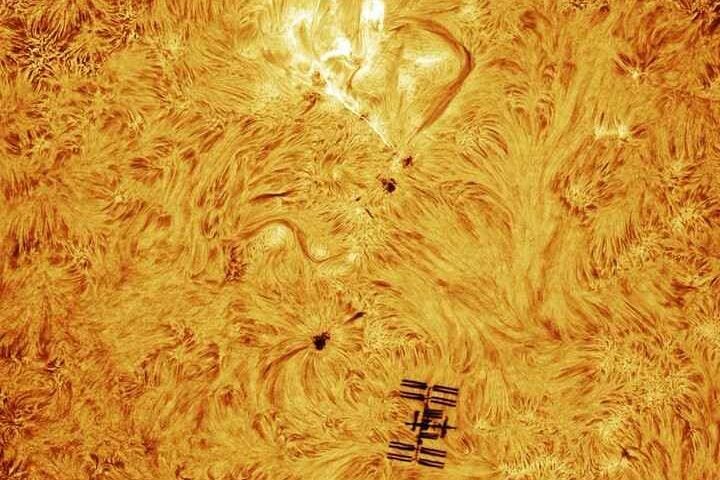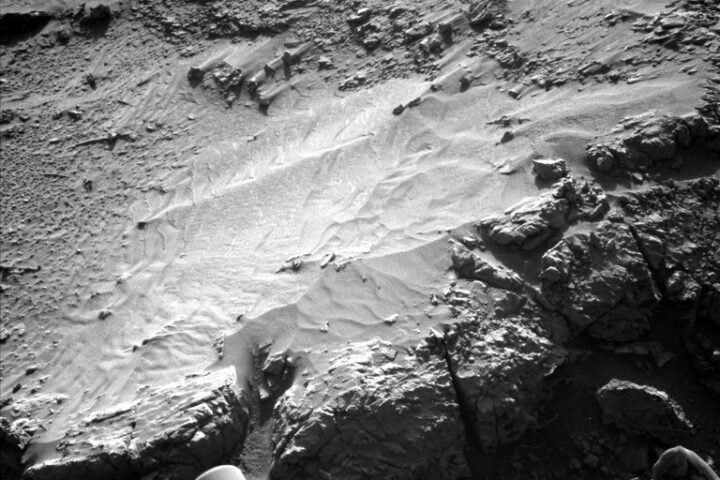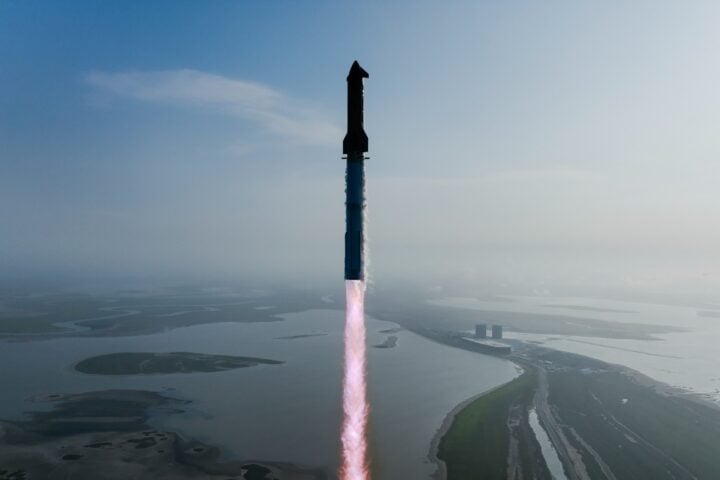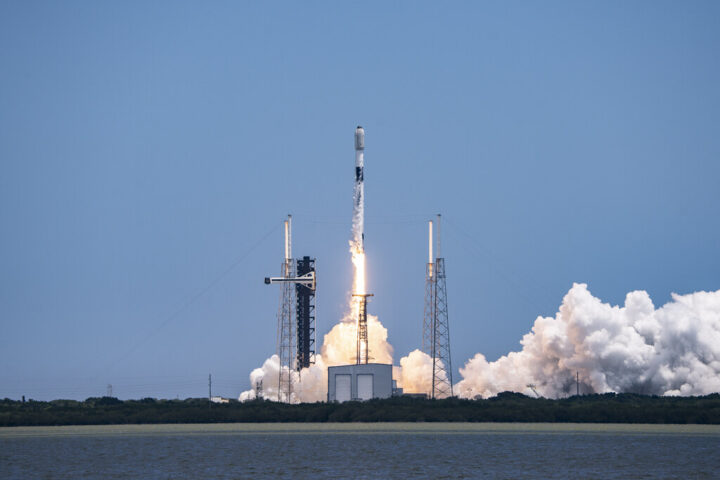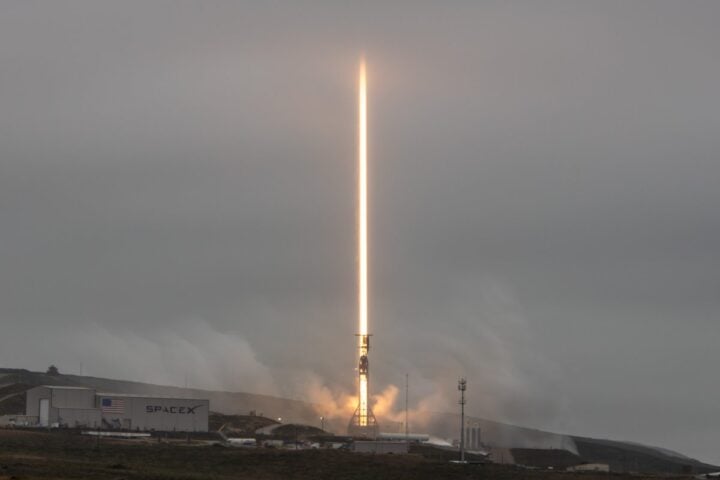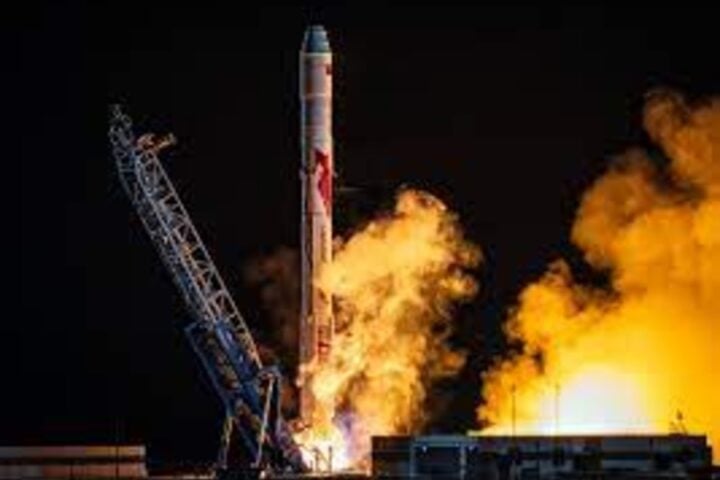Artur Davoyan, the aerospace engineer from the University of California, Los Angeles, recently proposed a pellet-beam propulsion concept that has the potential to send a large spacecraft into interstellar space. The concept, called ‘pellet-beam’ propulsion, was awarded an initial US$175,000 NASA grant for further development earlier this year. Today’s chemical-based rockets are just not fast enough to carry us far beyond our solar system within any reasonable timeframe.
The pellet-beam concept was partially inspired by the Breakthrough Starshot initiative, which is working on a ‘light-sail’ propulsion system. For successful operation, the conceptual propulsion system requires two spacecraft: one that takes off for interstellar space, and one that transports into orbit around Earth. The spacecraft orbiting Earth would then blast a beam of tiny, microscopic particles at the interstellar spacecraft.
Those pellets could reach 120 km/second (75 miles/second) and either hit the sail of the interstellar spacecraft or repel a magnet within it, helping to propel the spacecraft to higher speeds that would let it travel out of our heliosphere. “With the pellet-beam, outer planets can be reached in less than a year, 100 AU [astronomical units] in about 3 years, and the solar gravity lens at 500 AU in about 15 years,” mentions Davoyan. As per the current predictions, a pellet-beamed spacecraft weighing 1 tonne could cross into interstellar space in under 5 years.
Davoyan explained that his colleagues have adopted the pellet process because the pellets can be propelled by relatively low-power lasers.
In their present projections, only a 10-megawatt laser beam could be used.
The next step will be to present proof of concept using experiments, and in the Phase I effort, they will demonstrate feasibility of the proposed propulsion concept by performing detailed modeling of different subsystems of the proposed propulsion architecture, and by performing proof of concept experimental studies.
